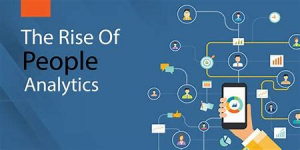While we are all used to the acronym D&I, it would more aptly be called I&D. That which comes first garners a disproportionate share of the attention and that is exactly what has happened in this case. Employers and the media alike are focusing on diversity, and primarily racial diversity at that. Diversity, however, has many meanings. It could indeed be ethnic or racial or gender, but it could also be cognitive diversity; a difference in the way someone thinks or interprets the world. The fact is, that no matter how diligent you are in sourcing from a diverse candidate pool, tracking your internal metrics and publishing your statistics to your Board, shareholders, investors and other stakeholders, none of it really matter if you haven’t spent the time to create an inclusive workplace. Your diverse population will leave because they don’t feel comfortable; they don’t feel like they belong.
An inclusive workplace is more than one with a Diversity Council, a few Affinity groups and holidays that include Martin Luther King Day and Juneteenth. A truly inclusive workplace is one where everyone feels a sense of belonging. They can bring their best and whole self to work everyday because they know they are not only accepted, but celebrated, for their differences.
DIVERSITY: is being invited to the party
INCLUSION: is being asked to dance
BELONGING: is dancing like no one’s watching
Research tells us that over 40% of employees feel left out or isolated at work. U.S. businesses spend nearly 8 billion dollars each year on diversity and inclusion (D&I) trainings that miss the mark because they neglect our need to feel included. If workers feel like they belong, companies reap substantial bottom-line benefits. High belonging was linked to a whopping 56% increase in job performance, a 50% drop in turnover risk, and a 75% reduction in sick days. For a 10,000-person company, this would result in annual savings of more than $52M.
Employees with higher workplace belonging also showed a 167% increase in their employer promoter score (their willingness to recommend their company to others). They also received double the raises, and 18 times more promotions.
There are a number of different ways that employers can increase an employee’s sense of belonging.
Lead the Charge: Ask “How would you change the situation if you could?”
Pay it Forward: Ask “If you were to talk to someone who has just been excluded in this same situation, what would you say or do for them to help?”
Gain Perspective: Ask- “Do you know of others in the organization who have faced similar situations and found ways to cope?”
Be an Ally: Remind yourself of the importance of inclusive behaviors at all times. We can never fully know another’s sense of belonging within our team. Including others and treating them with fairness is always a good idea.
Promote Allies: Verbally compliment fair and inclusive behavior as a way to demonstrate that this is behavior you value.
Working together we can increase the sense of belonging for all employees in all companies!



